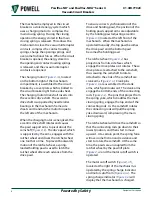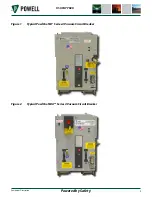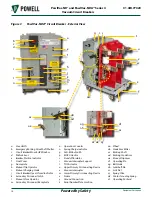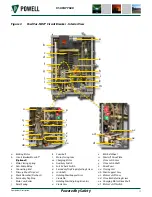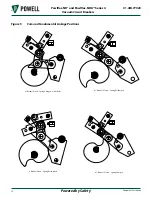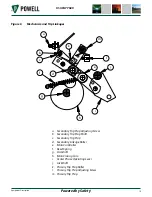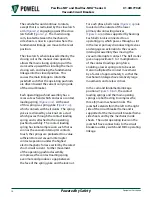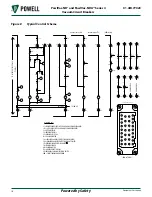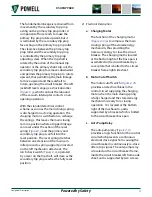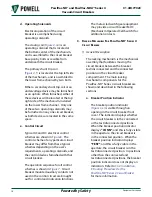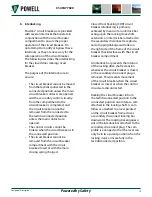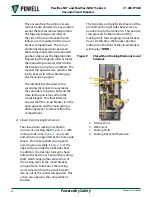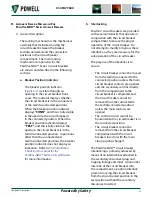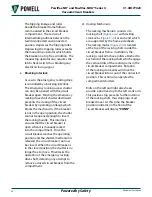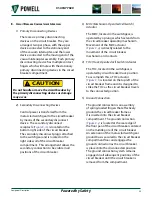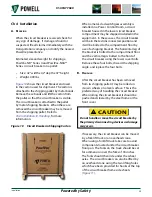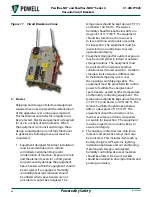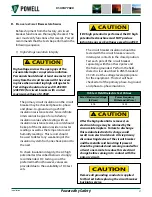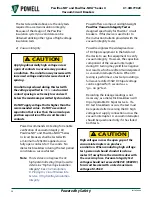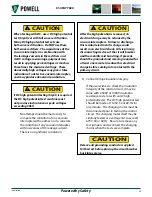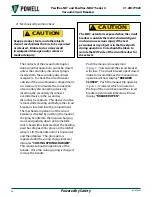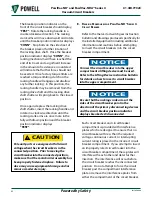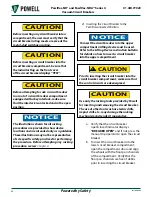
Powered by Safety
®
19
Equipment Description
01.4IB.77020
b. Interlocking
PowlVac® circuit breakers are provided
with several interlocks that operate in
conjunction with the circuit breaker
compartment to ensure the proper
operation of the circuit breaker. Do
not attempt to modify or bypass these
interlocks, as they are necessary for the
safe operation of the circuit breaker.
The following describes the interlocking
for the closed door racking circuit
breaker.
The purpose of the interlocks are to
ensure:
• The circuit breaker cannot be moved
from the test/disconnected to the
connected position unless the main
circuit breaker contacts are opened
and the secondary control circuitry
from the compartment to the
circuit breaker is completed, and
the circuit breaker cannot be
removed from the connected to
the test/disconnected position
unless the main contacts are
opened.
• The control circuits cannot be
broken when the circuit breaker is in
the connected position.
• The circuit breaker cannot be
removed from the circuit breaker
compartment with the circuit
breaker closed or with the main
closing spring charged.
Closed Door Racking (CDR) circuit
breaker interlocking is primarily
achieved by means of an interlock bar
acting upon the racking drive shaft
extension, an interlock bar attached to
the secondary disconnect receptacle,
and a tripping linkage and roller on
the right side of the frame of the circuit
breaker that interfaces with the circuit
breaker compartment.
An interlock bar prevents the rotation
of the racking drive shaft extension
whenever the circuit breaker is closed
or the secondary disconnect plug is
removed. This prevents movement
of the circuit breaker when the circuit
breaker is closed, or when the control
circuits are disconnected.
Racking the circuit breaker in from
the test/disconnected position to the
connected position also rotates a cam
attached to the racking shaft. A cam
follower, attached to a lever pivoted
on the circuit breaker frame, drives
a secondary disconnect locking bar
downward. The locking bar engages a
slot in the interlock bar attached to the
secondary disconnect plug. The cam
profile is arranged so that the lever can
only be in its upward position when the
racking crank arms are fully in the
test/disconnected position.




